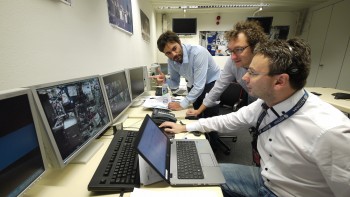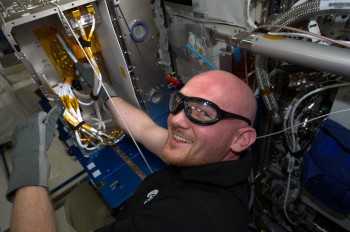Many people support a mission in space. We invite you to meet the teams that are keeping Andreas Mogensen and the International Space Station safe and running experiments, in their own words:
What is your team name?
PASO
What does your team name stand for?
Product Assurance and Safety Officer
What do you do?
We ensure that all activities on board the Space Station are performed without hazard to the astronaut.
What does your work typical day look like?
We usually support the Flight Control Team and the Payloads Center remotely from Bremen, Germany, or Torino, Italy, reviewing in advance the products that are used by the astronauts and following the operations. For iriss we have been working at the Columbus Control Centre to be as close as possible to the Flight Control Team.
How is working for iriss?
Normal International Space Station operations are like a marathon but iriss is like a sprint. There are so many activities every day and we follow them in Columbus Control Centre, the “heart” of the mission, to ensure a quicker reaction in case of malfunctions.
What is the best part of your job? What I like most is the intense atmosphere when there is a problem and the worried people rely on you to solve it. When the problem is solved, the gratification is so big that you do not feel tired even after 12 hours of hectic work.
Anything else?
The mission is going smooth, but it’s not always like this. I remember in 2014 when ESA astronaut Alexander Gerst installed the Electro Magnetic Levitator (EML) in Columbus. It happened that a bolt broke on orbit. The remaining piece of the bolt had to be removed and this was done using a saw. The problem sawing a metallic piece in microgravity is that the shavings float around everywhere, with the risk that they enter in contact with the eyes or that they are inhaled. This could be a safety nightmare but to avoid that, we used a special and super advanced technology: shaving cream! If you put a small nut of shaving cream around the piece you want to cut, it captures the shavings. So, the anomaly was solved, the installation was completed and we all lived happily ever after…





Discussion: no comments